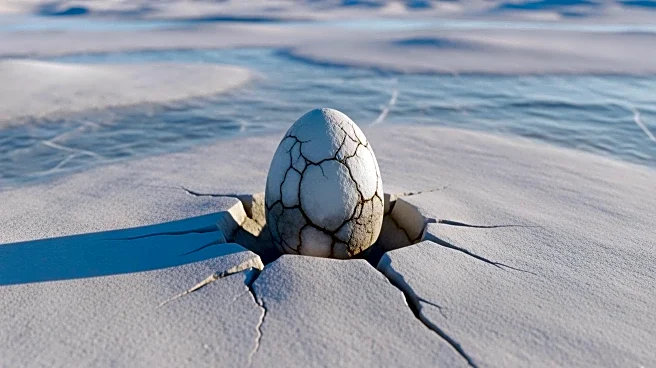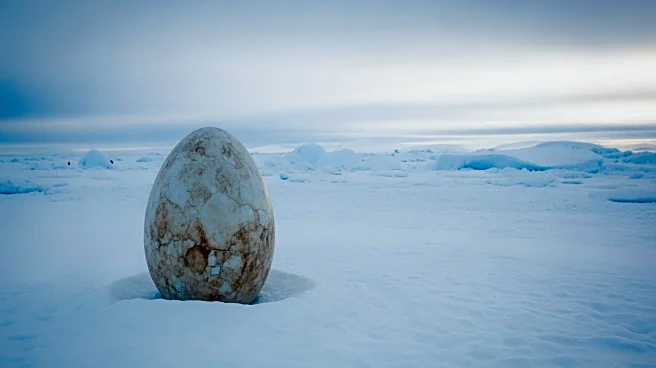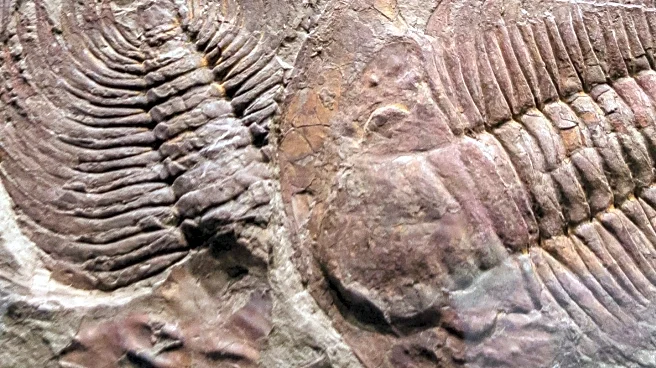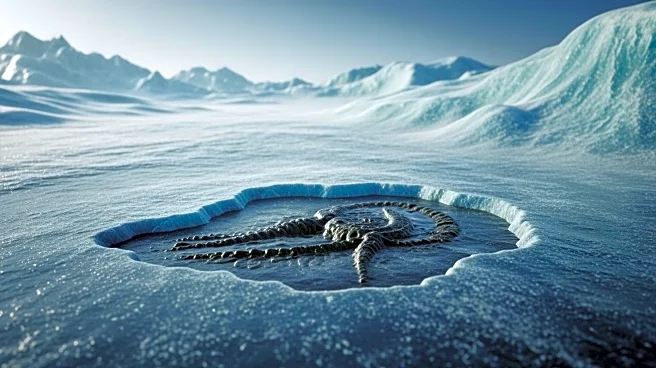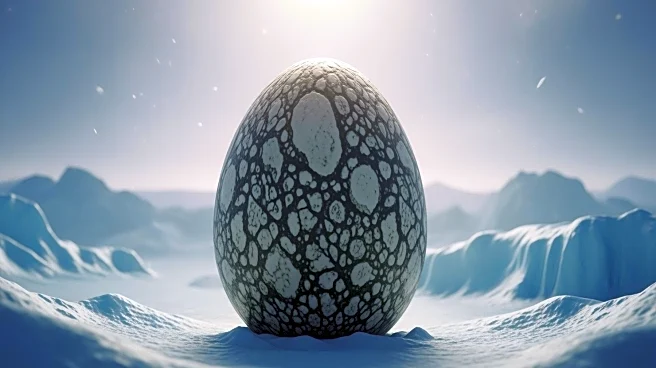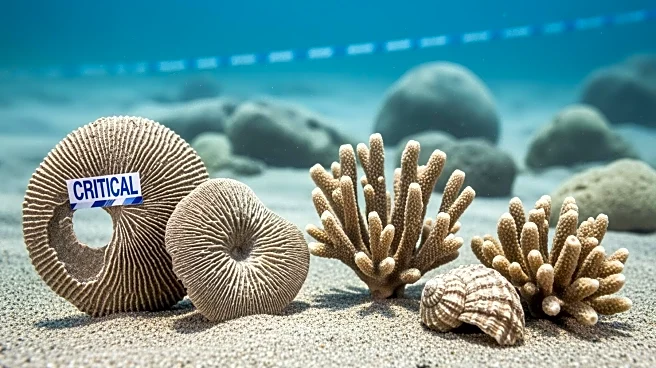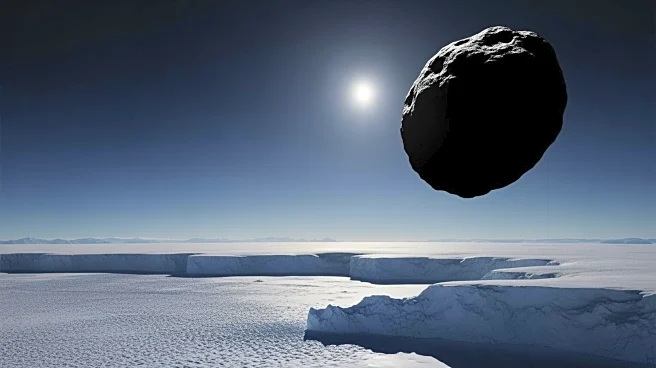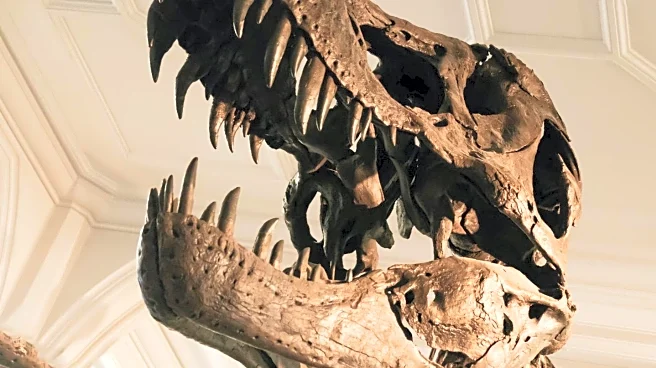What's Happening?
A groundbreaking discovery in Antarctica has revealed a massive fossilized egg, estimated to be around 66 million years old, on Seymour Island. This soft-shelled, leathery egg, nicknamed 'The Thing' by
the Chilean team who discovered it, is the largest of its kind ever found and the second-largest egg of any type on record. The egg's unique characteristics have prompted scientists to reconsider previous assumptions about the reproductive methods of ancient marine reptiles. Unlike the hard-shelled eggs typically associated with dinosaurs, this egg's structure resembles that of modern lizards and snakes, suggesting that some large marine reptiles may have laid eggs rather than giving live birth.
Why It's Important?
This discovery is significant as it challenges long-held beliefs about the reproductive strategies of ancient marine reptiles and dinosaurs. The presence of a soft-shelled egg in the fossil record is rare, as such eggs are less likely to fossilize compared to hard-shelled ones. This finding suggests that soft-shelled eggs may have been more common than previously thought, potentially altering our understanding of prehistoric life. The discovery also highlights the unique geological conditions of Antarctica, which can preserve delicate fossils that might not survive elsewhere, offering new insights into the biodiversity and ecological dynamics of the Cretaceous period.
What's Next?
Further research is expected to explore the potential connections between this egg and known species of marine reptiles, such as the giant mosasaur Kaikaifilu hervei, which lived in the same region. Scientists aim to determine whether the area served as a breeding ground for marine reptiles. Ongoing studies will continue to investigate the environmental conditions that allowed for the preservation of such rare fossils, potentially leading to more discoveries that could reshape our understanding of ancient ecosystems.
